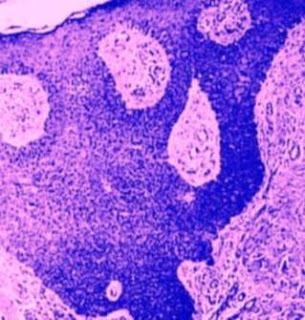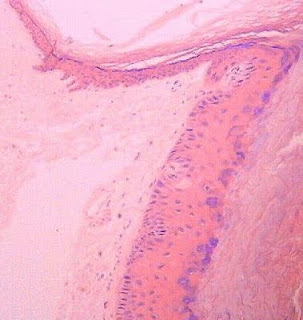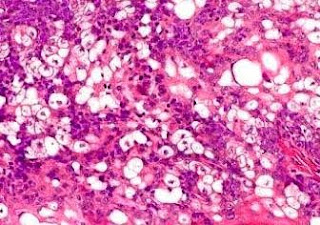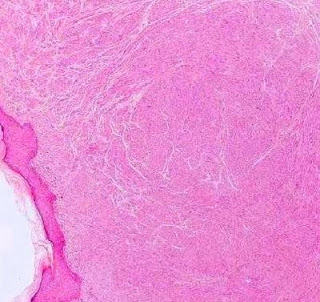Answer of Dermatopathology Case 4
Eccrine Porocarcinoma Visit: Eccrine Porocarcinoma Visit: Dermatopathology site Abstract: Eccrine porocarcinoma of the auricle: a case report. Kaohsiung J Med Sci. 2009 Jul;25(7):401-4. Eccrine porocarcinoma (EP) is a rare skin malignant lesion representing0.005-0.01% of all cutaneous tumors. It is a tumor that most commonly present in elderly people aged over 60 years. Approximately 250 cases of EP have been reported since this disease was first described in 1963. However, only three cases occurring specifically on the ear (including the current case) have beendocumented in the literature to date. Based on the rarity of EP of the ear, we present this 78-year-old man with EP on the right ear lobule, which was diagnosedaccidentally during the management of other unrelated problems. The etiology,diagnosis, treatment and prognosis of this disease are discussed, with a brief review of the literature in this report. Fine-needle aspiration cytology of metastatic eccrine porocarcinoma.Diagn



